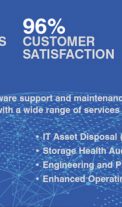The need to provide remote access for employees has been on the agenda of large businesses and those with multiple offices and/or field sales teams for quite some time but undertaking a project to deliver remote access for employees for the first time is an extremely complex task, not least of all because of the security and management issues setting up and providing remote access on an ongoing basis presents for a business.
From providing access to company information for people that work from home, to giving central access to company information and systems from branch offices, to enabling mobile teams to upload or download information from any location, the term ‘remote access’ can mean different things to different companies so, in looking for a solution, business owners need to consider the types of access that may be required.
What Are the Benefits of Remote Access?
The benefits of providing remote access to employees are obvious, especially for companies that have field sales teams. By being able to provide a constant, up-to-date resource of the company's products, services and stock, and by facilitating faster reporting and collating of information (making the business far more responsive to customers) companies are potentially enabling field teams to generate more sales.
There are some considerable benefits for businesses in general too though with companies being able to:
- Provide remote access which can enhance productivity by making available access to information on the company’s network
- Reduce communications costs and increase flexibility
- Increase productivity, satisfaction and engagement in company activity from employees by being able to access information on an ‘as needed’ basis
- Provide access from any web browser or device loaded with the appropriate VPN software
- React positively when local events, extreme weather conditions or other catastrophic events occur. Having a flexible remote access strategy in place will allow you to overcome any unforeseen hurdles and continue ‘business as usual’
- Satisfy employment law in being able to consider and respond to employee requests for flexible work patterns
Sounds like it could be a very positive move for any company. There are however several variables to consider when looking at providing remote access to users. The level of information, the type of user and the method of connecting remotely all need to be considered and understood prior to seeking the right solution for the business.
User friendliness of both hardware and software is a major factor in implementing a remote access solution. IT support of remote staff can be challenging enough, particularly when there is no direct access to the users’ equipment. For this reason, plug and play solutions should be sought.
Virtual Private Networks (VPNs)
The change in demand in recent years for user access whilst off site has been quite staggering. With the processing of information becoming more user-friendly and with information increasingly being presented in a more web-friendly format, the demand for access has increased dramatically. With this increase in demand, comes an increased security risk in unintentionally providing other unscrupulous third party users access to central systems and therefore potentially an increased risk of hackers and intruders accessing critical systems within the organization. This is why virtual private networks (VPN) have become so popular with companies needing to grant secure remote access.
Remote access VPNs allow secure access to resources by establishing encrypted communication across the internet. This allows companies to cost-effectively and securely extend the reach of their networks to anyone regardless of their location or device.
Technology & Compatibility
Business owners will generally choose the same hardware supplier for remote technology as they have for desktop solutions. Most products conform to certain universal standards and together with internet protocol gaining precedence over internal communication systems, compatibility issues are minimalised with physical hardware occasionally [and only then marginally] affected.
In terms of the information transport mechanism compatibility, even where there are a variety of mechanisms employed (phone networks / wireless comms etc) there will be a standard gateway between remote users and the business which eliminates potential barriers to communication.
The right tools for the job
It’s important that any employees working remotely have access to the right technology to do their job. Investment in hardware or software ensures the company retains direct ownership of the technology; and from a security perspective, that employees aren’t using personal equipment to do company work.
Be aware that constant changes in technology can also lead to additional and unnecessary learning curves and potential migration challenges so it’s imperative that you take time to consider and understand what your remote teams need to do their jobs properly and therefore which is the best fit technology for the long run.
Our team are specialists in understanding your requirements and recommending future proof, practical solutions for businesses. Call us today on 01359 221038 to discuss your remote access project.







